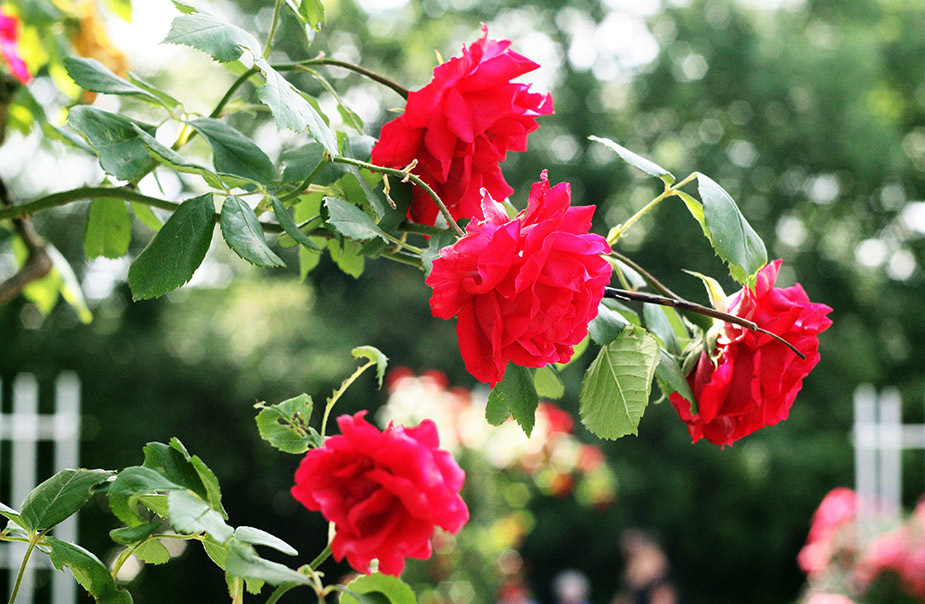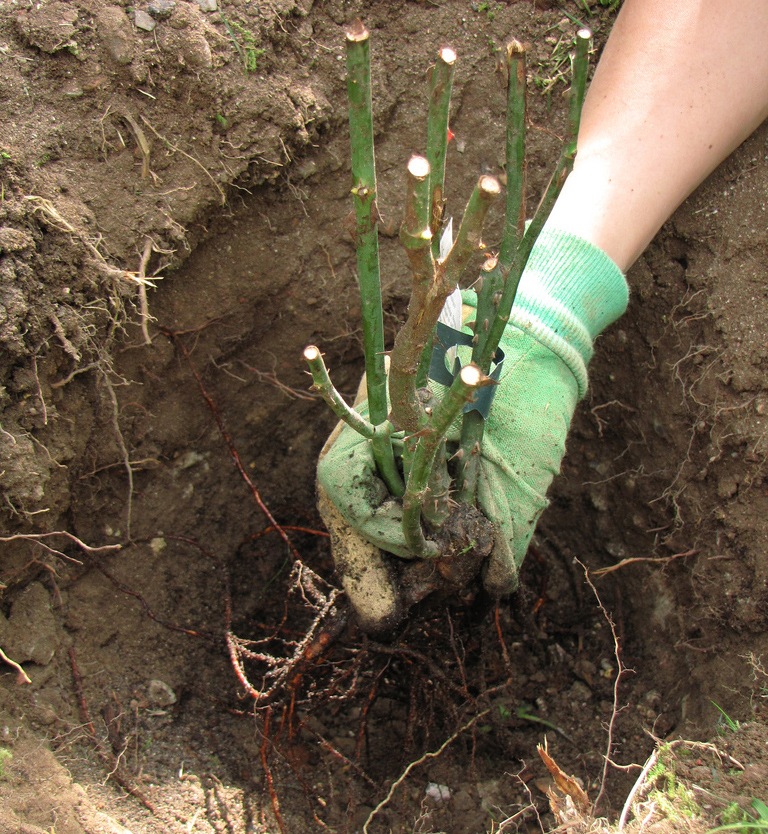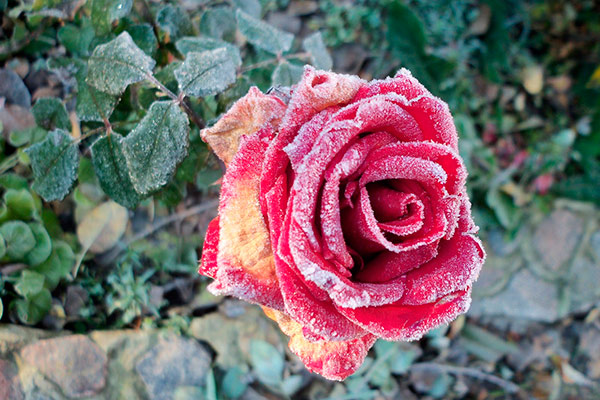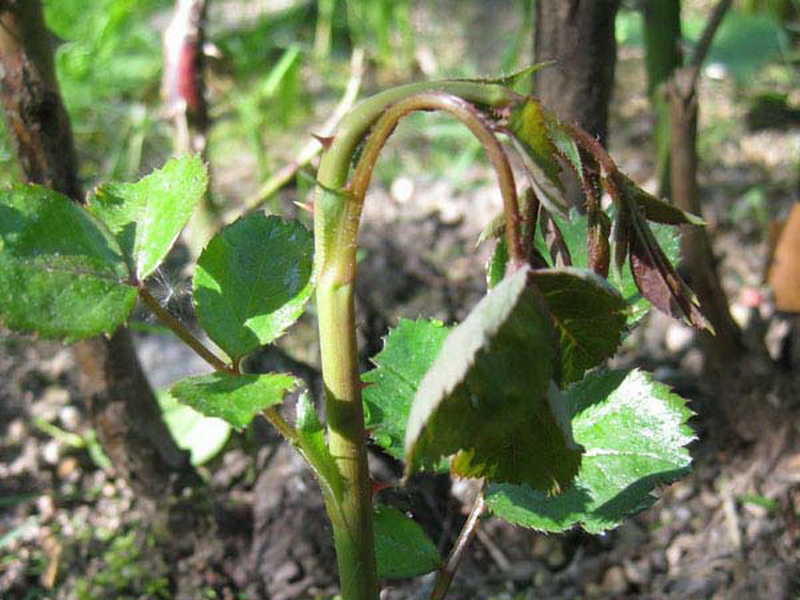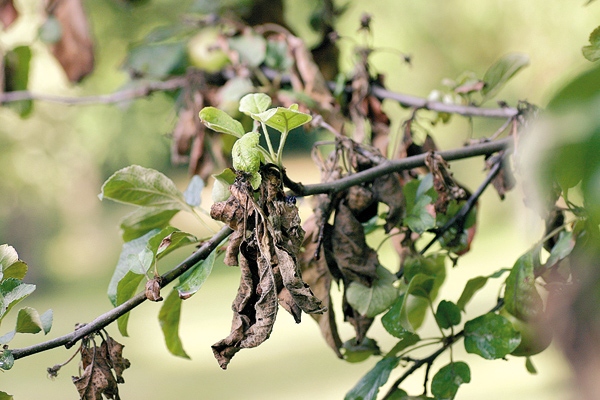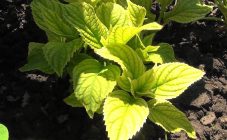Content:
Growing roses both in the garden and indoors is a complex procedure characterized by many different subtleties. Failure to observe them is fraught with various undesirable consequences, one of which is the drying out of the foliage, which, as a rule, turns into dropping it. You need to clearly know the reasons for this in order to be able to help the plant.
General rules for caring for a rose at home
In growing roses at home, you need to consider the following nuances:
Air humidity and temperature
Roses require a relatively cool temperature in winter and moderate in summer. For plants, its increase is not so much dangerous as overheating of the soil in the pot. The optimum temperature for roses in summer is up to 25 ° C. At the same time, insignificant daily fluctuations in this indicator will benefit the plants. For the winter period, the plants are rearranged in rooms with a temperature within 15 ° C.
Humidified air is preferable for a rose. In excessively dry conditions, plants are heavily parasitized. In this regard, plants in warm conditions require a single light spraying every 2 days, after which they must dry out.
Soil and pot
The shape of the container is not essential for roses. The pot should only be large enough so that the plants can fully develop and the air can circulate normally. As the roses grow, they are transplanted into other pots with a larger volume.
In decorative terms, plastic is the most attractive, but the earth in them dries quickly, as a result of which the buds wither. Clay pots are also not recommended for use, as moisture quickly leaves them.
Soil for roses at home should be moisture and breathable. It should include the following components:
- 4 parts of humus;
- 1 part of sand and turf soil.
The pot should be equipped with a good drainage system that will allow excess liquid to easily flow through the soil. However, the holes should not be too large so that water does not flow out too quickly.
Shine
In summer, containers with flowers, if possible, are taken out to the terrace or balcony, where fresh air is available to them. This is to prevent direct sunlight from reaching the foliage. If this is not possible, you should move the pot to another windowsill or shade.
General rules for caring for a rose in the garden
I plant roses in open ground, the following should be provided:
Seat selection
The place for the garden rose should be well lit.When planting several bushes at once, they should be placed so that low plants are in the foreground, and the taller ones are shifted back to avoid shading. In shady conditions, garden roses grow much worse, they practically do not bloom, and dark spots form on the leaves.
The soil on which roses will be cultivated must be well loosened beforehand. The soil should be saturated with nutrients, and the depth of the fertile layer should be at least 40 cm. Swampy areas are absolutely not suitable for plants. Plots with closely lying groundwater should be avoided.
Preparing the soil for planting
The most effective way to prepare a site for planting roses is at the same time the longest. In this case, old newspapers are used, which are laid out on the surface of the plot in 8-12 layers and fixed with something so that they do not fly away. In this state, the plot is left for 2 months. During this period, all weeds will die under such a shelter, and the soil will be greatly softened and it will be easier to dig up.
After that, you need to determine the acidity of the soil. The optimal pH level for roses ranges from 6 to 7. If the soil is acidic, the situation is corrected by adding lime.
Next, a planting hole is dug into which fertilizers are added. If superphosphate is used in their quality, care must be taken that the drug does not come into direct contact with the roots of the rose. The substance is placed in a hole, covered with earth and only after that the plant is placed there. In most cases, a drainage system is formed in the pit, for which large crushed stone, branches, expanded clay are used.
Landing
If roses are planted in spring, you need to wait until the soil is warmed up well enough after thawing. In most regions of Russia, the optimal period for planting roses begins in the last April decade and lasts until mid-May. Nor should it tighten with the landing. At the end of spring, the soil heats up quite strongly, and it will be difficult for the plant to root and grow normally in such conditions. Even when rooted, the plant in such conditions on the street will be weak, it will begin to throw off leaves and buds.
It is allowed to plant in the autumn. To do this, select the period from the second September decade to the second decade of October. At this time, the weather is relatively warm, the soil has not yet cooled down and contains a significant amount of moisture. At the same time, in regions where autumn is rarely warm and long (in Siberia), the planting dates are shifted to the end of August-September.
To plant or transplant a plant in the fall, you need to prepare a planting hole a month and a half before the procedure. In any case, at least 20-30 days should pass after planting and before the first frost begins.
When the hole is ready, water is poured into it and wait until the liquid is completely absorbed. After that, plants with a closed root system are placed directly into the hole. If roses have open roots, then their tips are shortened by a third, and then placed in a solution of water or a root formation stimulator for several hours.
A low earthen mound is formed in the center of the hole. A plant is placed on it, and the roots are spread over the entire hole. In this case, the root collar should be located at least 5 cm below the surface of the fossa.Then the hole is covered with earth. For convenience, a shallow side is dug in the bust sector, which will not allow water to spread.
The rosette reacts negatively to crowded plantings and can be affected by diseases and shed leaves in such conditions. Therefore, the flower needs to provide sufficient spatial isolation. Depending on the specific species, this indicator ranges from 50 cm to 1 m.However, this distance may vary depending on the purposes of plant cultivation. So, bush roses look great as single planted plants, while in rosaries it keeps the above distance between two plants.
Subsequent care for planting indoor or outdoor roses involves the following procedures:
- irrigation;
- top dressing;
- trimming;
- fight against pests and diseases;
- transplant as needed;
- reproduction, etc.
Why does a rose have dry leaves
Most often, the rose dries and sheds its leaves as a result of the negative effects of diseases. The most harmful among them are the following:
- Powdery and downy mildew (peronosporosis) dew. The main symptom is a whitish coating. The edges of the foliage of a diseased plant begin to dry out and fall off after that. The affected plantings are treated with preparations based on copper. For prophylaxis, roses are sprayed with Bordeaux liquid from time to time. Peronosporosis usually manifests as dark markings affecting young foliage. Adult leaves are covered with light spots, which outwardly resemble signs of powdery mildew. As the disease progresses, the spots turn purple, and the leaves dry. To save the plant, substances with copper and zinc are used in the composition, and prevention involves the introduction of phosphorus-potassium fertilizers during the potential period of damage.
- Rust. The entire plant becomes covered with dark marks, after which some parts of the bushes begin to dry out, which leads to its wilting. The disease is treated by spraying with copper and zinc preparations. With the onset of spring, the area should be cleared of frozen and broken plants.
- Gray rot. Affected specimens are covered with a characteristic bloom, similar to mold. In a short time, the bushes dry out, and the rose dies. The damaged particles are cut off, and the plantings are treated with foundation.
- Charred pestalocia. This fungal disease affects the shoots, but as a result of their death, the leaf inevitably dries out. The diseased parts of the bush are cut and burned, and the roses are sprayed with foundation.
- Infectious burn. The disease affects the stems, forming brown marks on them. Subsequently, this leaves begin to dry. The affected parts of the roses are cut out, followed by spraying with a fungicide. Healthy plants are sprayed with Bordeaux liquid.
The rose dries and sheds leaves and under the influence of pests. So, this is most typical for the spider mite. Also, the answer to the question of why the rose withers and dries may be the effect of insects such as:
- leaf beetles;
- thrips;
- goldfish;
- rose aphid;
- nematodes;
- sawfly.
The grower is required to constantly monitor the plantings and respond to the manifestation of symptoms of the presence of pests. It is necessary to use exclusively clean and disinfected soil (this is especially true for the sandy ingredient).
When asked why the leaves of a garden rose dry, it should also be answered that when cultivated in open ground, roses are often affected by small animals such as mice and moles. They interfere with the normal process of feeding roses, which leads to a number of negative consequences for the plant, including the fact that the rose withers in the garden.
After transplanting, the rose withers: what to do
This unpleasant consequence of the transplant is most often observed if an unsuitable pot was selected.Before carrying out a transplant, one should estimate the approximate dimensions of the root system and earthen coma and choose the transplant capacity based on the data obtained.
Transplanting should be done with caution, paying particular attention to the safety of the root system. The slightest injury to it can provoke the death of the rose, which will be accompanied by drying out of the foliage. All other subtleties of the technology of transplanting and cultivating roses must also be observed.
A rose in a pot dries up: what to do
When asked what to do if a decorative rose in a pot dries up, one should first of all answer that indoor roses require more attention than their garden relatives, as a result of which the reasons why a rose dries up are more varied. So, very often the leaves begin to turn yellow and dry immediately after purchasing them.
This is one of the signs that the plant is passing through acclimatization, which is caused by a sharp change in growing conditions. This procedure can take up to several weeks, during which the plant only needs to be placed in a bright place and periodic irrigation is carried out. After the specified period of time, the plant will get used to the new conditions, but during this time it can dry out and fly around most of the leaves.
In extremely hot conditions, the decorative rose will not grow normally. In addition to regular watering, the pot with a bush must still be placed correctly. So, in the winter, you should move the container away from the warm radiators. Insufficient watering is also one of the reasons for the drying of the leaves. The next watering is carried out immediately after the soil dries slightly after the previous irrigation. The best option for applying liquid is to water through the pan. This method will allow the rose to take the required amount of water on its own, and the remaining liquid is then drained.
Drying of the foliage of a room rose is often accompanied by a simultaneous decay of the root system. An excess of moisture leads to this, which can be provoked by too compacted soil, in which the liquid does not have time to dry. In a similar situation, the bush is dug up and cleaned of old soil. The affected roots are shortened to healthy tissue, and then washed in a solution of potassium permanganate. After that, the plant is placed in a fungicidal solution for half an hour. Upon completion of all these procedures, the rose is ready to be transplanted into clean and disinfected fresh soil.
The rose must be fully supplied with all the essential nutrients. With a deficiency or absence of some of them, plants begin to deform in one way or another. In particular, this is manifested through the drying of the leaves. This is especially true for elements such as:
- iron;
- potassium;
- manganese.
Knowledge of agricultural technology greatly facilitates the work of the gardener and can make it much more efficient. Competent and timely measures taken can revive a drying plant and help it quickly recover, without allowing the foliage to fall off and dry completely.
